The Vikings, or Norsemen, were members of the Scandinavian warriors, who were excellent seafarers, tradesmen, and colonizers. They were often depicted as tall, muscled, and fair-skinned people with long blond or red hair. In addition, many paintings depicted them as unkempt and dirty.
But the depiction was more a product of fiction. Based on archeological findings and historians’ accounts, the Vikings were indeed bigger in body size than ordinary people, but that is due to their work. However, they were not overly tall, with men averaging five feet six inches while women were only five feet one inch. Most were fair-skinned, although some had brown or darker skin, hair, and eyes. An average Viking will have green, blue, or hazel eyes. According to records, they bathed at least once a week, but they all ensured that their long hair was clean, combed, braided, or tied.
Facial Features
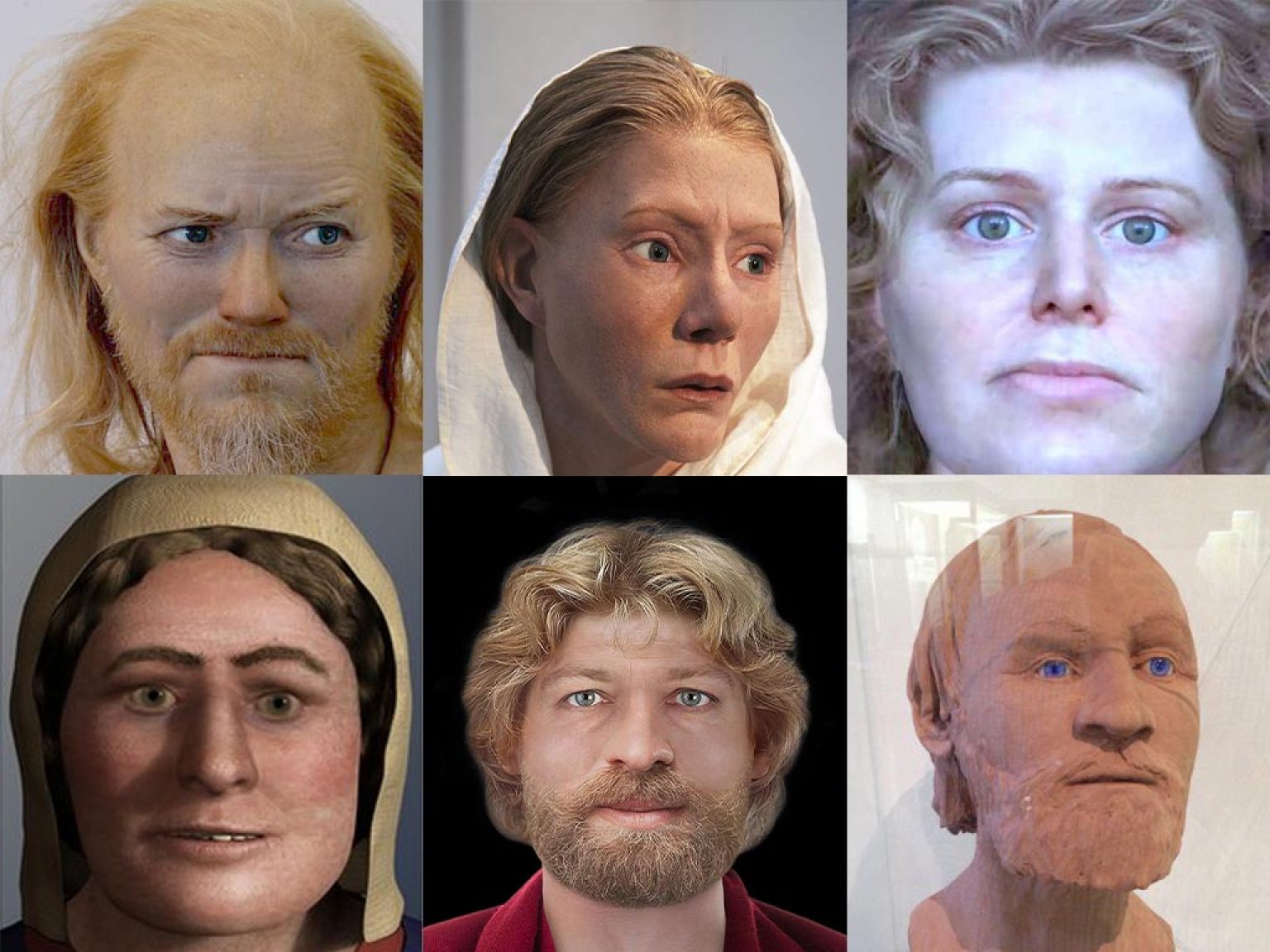
During the Viking Age, the men’s and women’s facial features were more similar. The women had prominent brow ridges, which is typically a masculine feature. The shape of the men’s faces was more feminine, as they had less prominent brow ridges and jaws. While these features were typical, not all the analyzed skeletons were identical. To ensure they do not make a mistake, archeologists compared the width of the pelvis against the skull’s features.
A DNA study in 2020 revealed that they also have similar genetic markers in eye color as the Scandinavians of today. Therefore, the majority of them, depending on their region, would have hazel, green, or blue eyes. However, according to the same study, there were Vikings with dark eye colors compared to today’s generations of Scandinavians. Therefore, the Vikings of yesteryears comprised a more diverse group of people than today’s Nordic countries.
Facial Hair
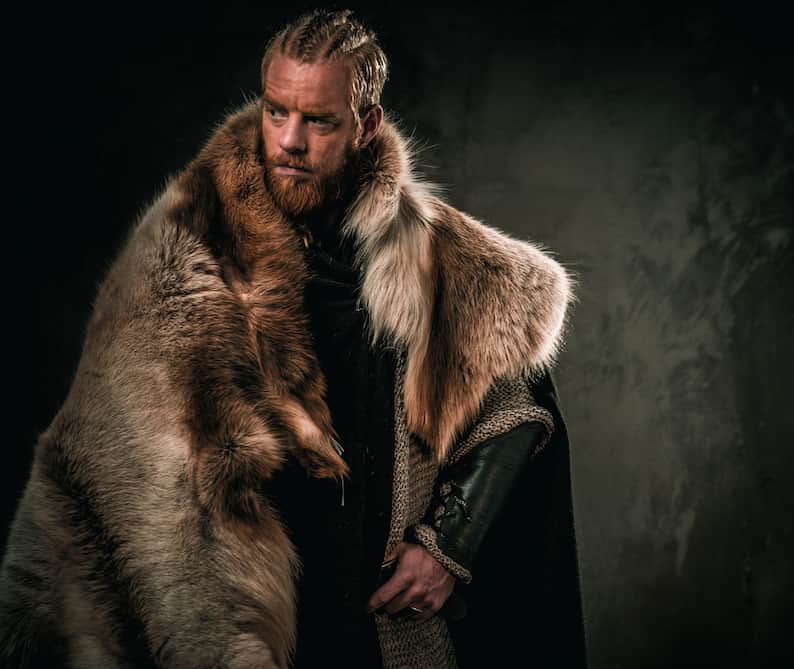
According to historians, most Norse men had facial hair and took great care of their beards, which was a source of pride. According to the sagas, some Vikings killed men for mocking their beards. It could also start a long-standing family war. The Vikings had either full and long beards or mustaches and mutton chops. From the picture sources, archeologists said the Vikings always groomed their beards, which could be long or short, but they shaved the hair further down their necks. According to researchers, they found a 3D carved male’s head in Norway’s Oseberg ship burial mound depicting a man with well-groomed hair with a long mustache. His chin beard reaches up to the man’s mustache. However, it did not reach the man’s cheeks.
From written sources, historians said many Viking men braided their hair and even earned nicknames for their beards. For example, a famous Viking named Sweyn Forkbeard got his nickname because he divided his beard into two braids.
Hair Styles

Vikings have different hair colors, but the more dominant is red hair and blond hair. Archeological findings showed them with shoulder-length hair parted in the middle, long hair tied in a knot, braided behind their back, or combed back neatly. Some Vikings shaved their hair at the back but kept it in front longer, while others shaved their back and sides but had a high bowl cut.
Archeological evidence proved the Viking men had long hair. They usually braided, tied, or shaped their hair in various styles to prevent it from getting in the way when working or in combat.
Viking women kept their hair long. However, they kept them neat, parted their long hair in the middle, tied back in a braid or know, combed back, knotted, or braided to one side. Other women tied their long hair in a Valkyrie knot at the back of their heads.
Nose Shape

There is scant information about the shape of the nose of the ancient Vikings, but gauging from the sculptures, drawings, and facial reconstructions, the Vikings do not have large noses. Instead, they have straight, narrow noses. However, there is a difference in size between men and women. If you compare the Vikings’ noses to the noses of modern-day Scandinavians, who were their descendants, you will have a general idea of the shape of their noses. The Vikings’ noses are shorter yet high-bridged. Some Vikings have narrow bridges, while others have broad ones. In some women, the nose bends outwards.
Height
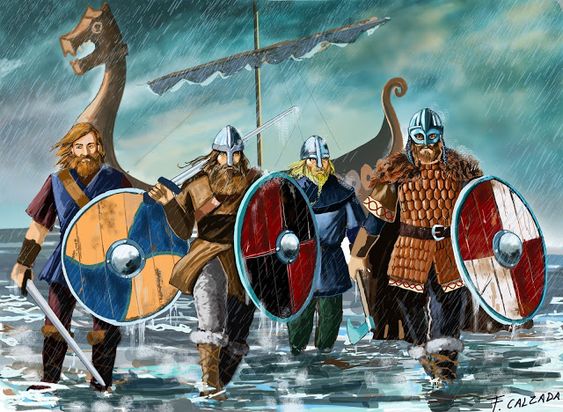
The Viking skeletons archeologists found showed that a male Viking was about five feet six inches tall, while the female Viking was about five feet one inch tall. It would seem they would be taller as the average height of modern-day Scandinavians is about five feet eight inches. But some historians say the average Viking was about three to four inches shorter.
However, there were accounts that they were taller. For example, Ahmad ibn Fadlan, an Arab diplomat, wrote in his travel journal, the Risala, that he encountered the Varangians, a Viking group that eventually became known as the Rus. The area they occupied became Russia today. He described the Varangians as ruddy and blond and tall as date palms.
From a more sizeable archeological record of adult males during the Viking Age found in different locations, the height ranged from five feet seven inches to five feet nine inches.
Weight
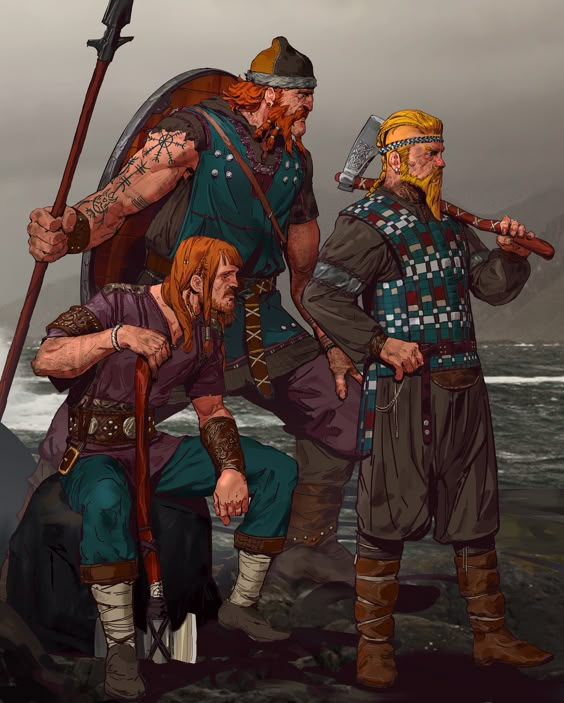
Based on archeological findings, the Vikings weighed over 309 lbs (140 kg). They were also stronger than most people they met on their conquests. In addition, the skeletal analysis of their remains revealed that their muscle mass was larger than average.
At the Viking Museum of Oslo, the archeological display shows there are very large Norsemen weighing between 287 to 309 pounds (130 to 140 kilograms). The reason behind their size and strength was their lifestyle. The Vikings prioritized fishing and animal husbandry over their neighbors, who existed in agricultural produce. In addition, their access to protein-rich foods favored their preferred occupations as colonizers, explorers, traders, pirates, and raiders.
The Vikings started their warrior training while still relatively young. Nevertheless, they were adequately fed. Their diet consisted of carbohydrates and protein from bread, fish, and pork. Moreover, their regular physical activities made them stronger than the average women and men.
Typical Body
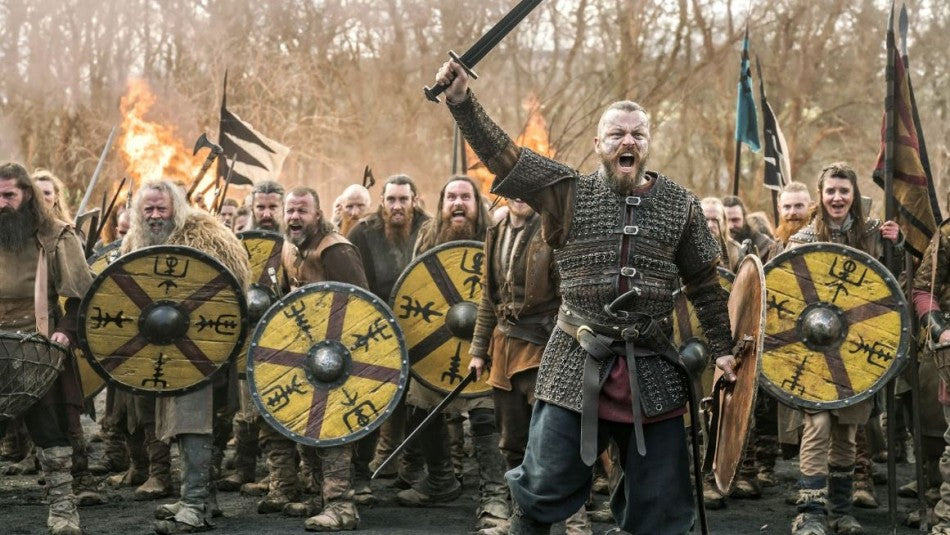
Today’s fascination with the Vikings in movies, video games, and TV series portrays them as strong people with big muscles. Fiction is not far from the truth because the Vikings were more muscular and robust than the average person, and the characteristics apply to both men and women.
Anatomically, the Vikings’ bodies were similar to modern people, although they were shorter by several centimeters. However, their bodies needed to bulk up due to their hard work as sailors, conquerors, pirates, etc. Most of them did suffer from dental problems and osteoarthritis as they age. Although they had access to various foods from around the world due to their travels as warriors and tradesmen, evidence showed that the higher officials and rulers enjoyed most of the more decadent foods.
Makeup Habits
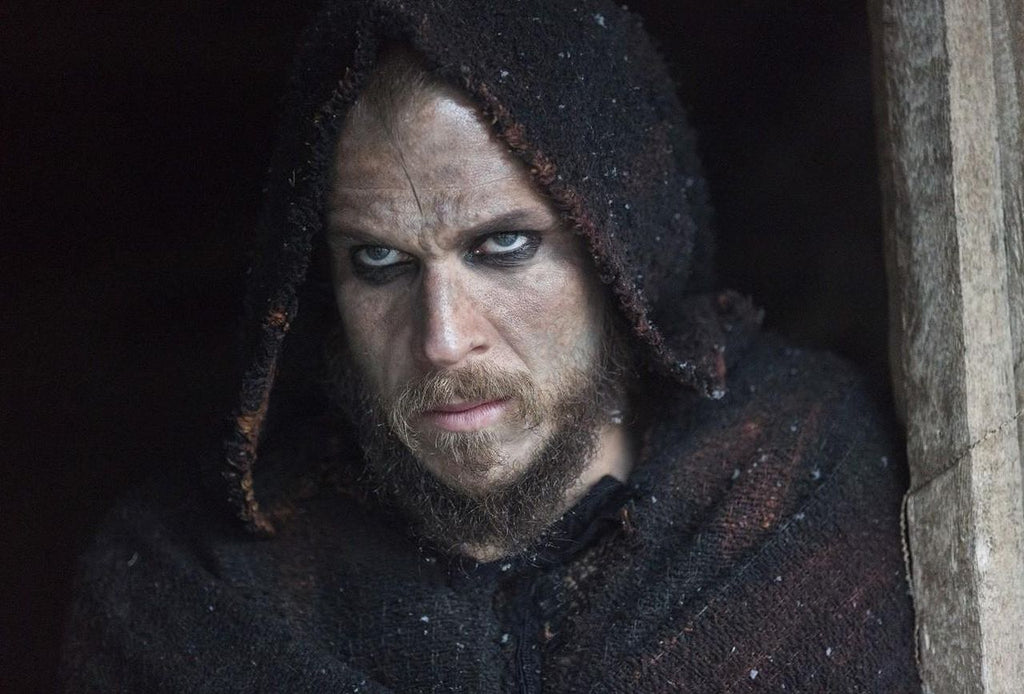
In a record written by Al-Tartushi sometime in 950 CE, he noted that Viking men and women wore artificial eye makeup that prevented their beauty from disappearing. The author likewise indicated that they used an indelible cosmetic to enhance their eyes’ beauty. Accordingly, darkening the areas around the eyes help deflect sunlight on snow and at sea. Al-Tartushi suggested they wore makeup to look more beautiful and younger, indicating the Vikings used eye kohl. They also filed horizontal lines across the enamel of their front teeth. Then, they painted the lines with red resin.
On the other hand, Ibn Fadlan’s account mentioned that the Viking men wore eye makeup to look fiercer. They likewise wore blue tattoos all over their body. Archeologists believed this accurate as they uncovered several grooming kits from Viking ship burial sites, like washbowls, tweezers, scissors, ear spoons, and combs, including a mortar with makeup residue.
Skin Tone

While most Vikings had peach or white-colored skin, historians say stereotyping does not apply to them. Based on collected evidence, some Vikings had brown or even black skin. They were not originally from Scandinavia but could have been taken forcibly into the country as enslaved people. They were shorter and dark complexioned, with brown or black hair and brown eyes. Their faces were broad, and their skulls were rounded.
Considerable evidence and historical accounts prove the existence of dark-skinned Vikings. Moreover, there were several old pieces of literature referencing people with dark hair color. Still, it could also refer to skin color, as the Vikings were fond of creating nicknames based on the person’s appearance. Further, being voyagers, Vikings invariably brought back enslaved people from Spain, Northern Africa, and other places in Europe where people had dark skin. Most lived in Denmark, which is closest to European countries inhabited by dark-complexioned people.
Dressing
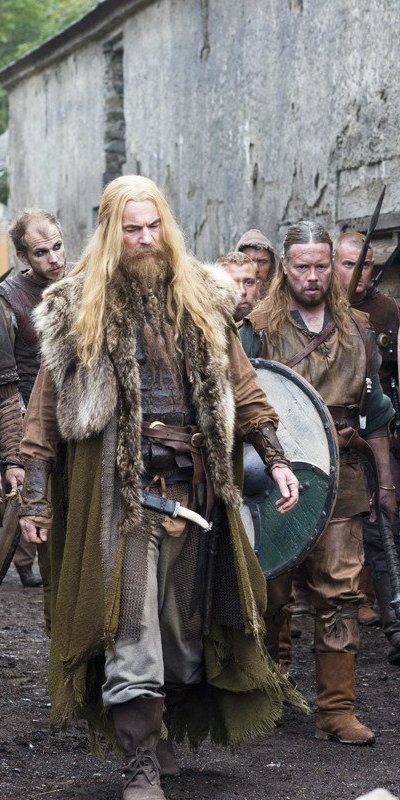
According to scientists, Vikings preferred blue, red, and colorful patterns for their outfits. However, most of their clothes rotted and nearly disappeared before the archeologists found their graves. Thus, they reconstructed from the small preserved fragments of cloth found in the tombs.
The women wore dresses and long skirts down to their feet. They found veveral belt buckles near the female skeletons’ shoulders, which indicated they wore harness dresses. These are clothes held together with straps over the shoulders. Some evidence showed that Viking women wore dresses with sleeves. They wore a linen base, similar to a petticoat, and an outer woolen dress.
The men’s clothes used the same materials. They had a linen kirtle (long shirt) as their inside garment and a woolen coat. The men also wore short or long trousers, sewn like pantaloons. Viking women typically wore a scarf and small hat while the men wore hats.